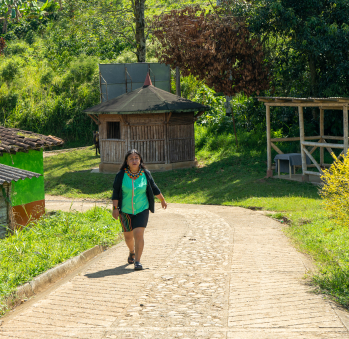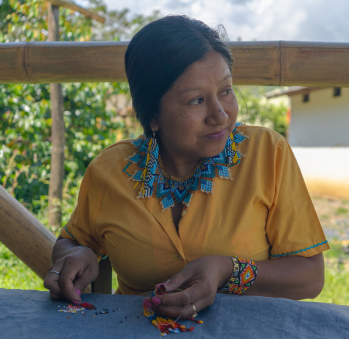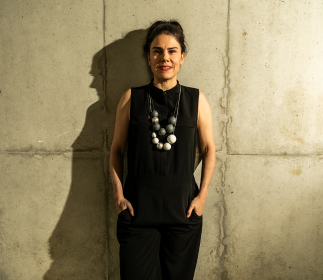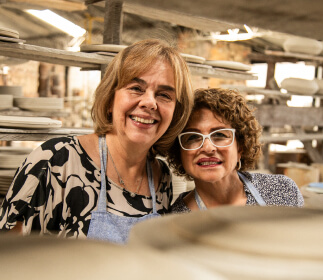Rosa Edith González Tascón
Workshop: Asociación de mujeres imaginando con las manos
Craft: Weaving
Trail: Antioquia Route
Location: Jardín, Antioquia
She speaks to us with warm Spanish words, even though her native language is Emberá. Rosa Edith belongs to the Emberá Chamí culture and is a member of the Karmata Rúa community of the Cristianía reservation. The latter is a relatively small settlement that you pass through on your way to Jardín, which has had a notable influence from the Lauras sisters.
Women from this ethnic group weave with chaquira beads. They get a strong sense of belonging from combining their trade with their agricultural practices. This is so because every ware they skillfully craft with their hands portrays a small part of who they are. These people recovered their land some 40 years ago, and they recount their stories through their wares. Said stories were passed down to the community’s craftswomen by Concepción Carupia, Rosa Edith’s grandmother, when she and the other weavers were young children. These stories are loaded with the energy of woven thought: ideas embodied in colors and shapes.
When we put on an okamá —one of the community’s customary necklaces— we are protecting ourselves and, at the same time, wearing a distinct aspect of Emberá life: be it a piece of their history, a visit to the forest, or a trip down the river. The necklace can also portray, for instance, the tale of the toad who, in dreams, punishes those who harm nature and rewards with greatness to those who take care of it. Everything has its place here. Rosa herself describes these weavers as tall women who imagine with their hands, walk through their pasts, sail down the rivers, watch the animals that will later feed them hunt, and describe the sunset and the rain.
Every part of this world is depicted in the drawings that will come to be jewelry. They also weave rhombuses into their necklaces, thus honoring the gaze of the jaibaná or traditional healer: the “big eye that sees everything.” These healers cure their people of evil spirits and guide them down the right paths. According to their tradition, when the kampunías —white men— visit their land and get a hold of an okamá, they get filled with Emberá energy. Wearing these necklaces has a ritual meaning in the community. Women wear them in special dance celebrations in which they paint their faces and wear parumas —colorful textiles—, earrings and hairbands.
Rosa is proud to wear all those beautiful garments and to see white people find them as beautiful and powerful as she does. The latter is so because she feels that we help preserve Emberá culture by appreciating their wares, thus allowing them to be true to who they are: indigenous people from the day they are born until the day they die.
Craft








Artisans along the way
Artisans along the way
No puede copiar contenido de esta página






































































